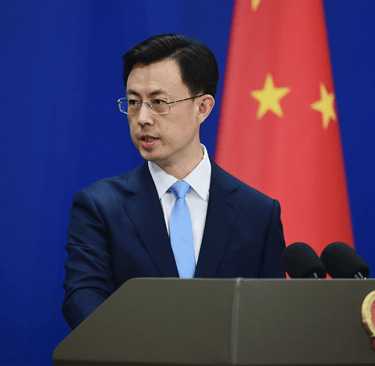Fentanyl Crisis: Is the U.S. Playing the Blame Game with China?
4/25/20254 min read


Fentanyl Crisis: Is the U.S. Playing the Blame Game with China?
The fentanyl crisis in the United States has reached a boiling point, claiming over 1 million lives since 2000 due to opioid overdoses (SHADAC). Yet, a heated debate rages on: Who’s really to blame? A recent post from China’s Ministry of Foreign Affairs (MFA) on April 25, 2025, has reignited the conversation, accusing the U.S. of dodging responsibility and slapping unfair tariffs on Chinese goods under the guise of tackling the crisis. Let’s dive into this complex issue, unpack the arguments, and explore what’s really at stake.
The Fentanyl Crisis: A U.S. Public Health Disaster
Fentanyl, a synthetic opioid 50 times more potent than heroin, has fueled a devastating epidemic in the U.S. In 2023 alone, over 70,000 Americans died from fentanyl overdoses (CDC). The crisis has roots in the late 1990s, when pharmaceutical companies aggressively marketed opioids as safe for chronic pain, a claim later debunked. The FDA’s failure to regulate these misleading campaigns exacerbated the problem, leading to widespread addiction (Journal of Ethics, AMA). As prescription opioids became harder to access, many turned to illicit fentanyl, often produced using precursors from China and smuggled through Mexico (Brookings, 2024).
China’s Stance: “It’s Your Problem, Not Ours”
On April 25, 2025, at 10:14 UTC, China’s MFA spokesperson took to X, stating, “#Fentanyl is the U.S.’s problem, not China’s. The U.S. and the U.S. alone has the responsibility to solve it.” The post argues that despite China’s “goodwill”—like being the first country to schedule all fentanyl-related substances in 2019—the U.S. has scapegoated China. Instead of addressing domestic failures, the U.S. imposed tariffs on Chinese imports, a move China calls “bullying” that harms counternarcotics cooperation.
China’s frustration isn’t baseless. A 2024 Brookings report notes that China expected strategic concessions—like reduced tariffs—after its 2019 fentanyl regulations. When those didn’t materialize, cooperation stalled by 2021. While China restarted counternarcotics talks in 2023, the U.S.’s recent tariff hikes—10% on Chinese goods as of February 2025, with plans for 54% by April 9 (Wikipedia)—have reignited tensions.
The U.S. Perspective: China as a Source of the Problem Critics of China, however, argue it plays a significant role in the crisis. Replies to the MFA’s post on X reflect this sentiment. User
@Frosty111222 wrote, “Why is China the largest exporter of Fentanyl in the world? It’s like poisoning the world’s water and blaming people for not filtering it.” Another user,
@JungleBall_2, accused China of not only trafficking fentanyl but also laundering the profits back home. A 2024 Brookings report confirms that China remains the primary source of fentanyl precursors, which are then synthesized into the drug in Mexico before crossing into the U.S.
The U.S. government has pointed fingers at China for years, claiming lax regulation of its chemical industry allows precursors to flow into global markets. During his second term, President Trump escalated tariffs on Chinese goods to 145%, citing the fentanyl crisis among other trade grievances (Wikipedia, 2025). The U.S. argues these measures pressure China to crack down harder on illicit exports.
Domestic Failures: The U.S.’s Role in Its Own Crisis
While the U.S. points to China, its own systemic failures are glaring. The opioid epidemic began with over-prescription, driven by pharmaceutical companies that the FDA failed to regulate effectively (Journal of Ethics, AMA). A 2023 House report also highlighted how the U.S.’s de minimis trade rule—allowing duty-free imports under $800—enabled a surge in cheap Chinese goods, including fentanyl precursors, often shipped by e-commerce giants like Temu and Shein (Wikipedia, 2025). Add to that the lack of robust addiction treatment and law enforcement targeting domestic trafficking networks, and it’s clear the U.S. has its own mess to clean up.
Tariffs and Tensions: A Roadblock to Cooperation?
The U.S.’s tariff strategy has backfired in some ways. China retaliated with 125% tariffs on U.S. goods and restricted exports of rare earths critical to tech industries (Wikipedia, 2025). This trade war has strained bilateral relations, making counternarcotics cooperation—an area both countries need to tackle fentanyl—harder to achieve. As user
@AliFeizireplied to the MFA post, “Cooperation, not confrontation, is the way forward.” But with trust eroded, can the two nations find common ground?
A Public Health Approach: The Missing Piece
Both sides might be missing the bigger picture: the fentanyl crisis is fundamentally a public health issue, not just a law enforcement one. A congressional hearing emphasized this, advocating for overdose prevention drugs like Narcan and addressing root causes like addiction and systemic healthcare gaps (Congress.gov). Blaming each other won’t save lives—collaboration might.
What’s Next?
The fentanyl crisis demands a multi-pronged approach: the U.S. must address its domestic failures, from regulating pharmaceuticals to closing trade loopholes, while China needs to tighten controls on precursor exports. But as long as both nations prioritize blame over solutions, progress will stall. The human cost is too high to let geopolitics stand in the way.
Thought Questions:
Should the U.S. focus more on domestic solutions to the fentanyl crisis, or is pressuring China through tariffs a necessary step?
How can the U.S. and China rebuild trust to tackle this global issue together?
Is the fentanyl crisis primarily a public health problem, a trade issue, or a geopolitical standoff—what’s your take?
Photo Credit: China NFA Spokenperson
hello@boncopia.com
+13286036419
© 2025. All rights reserved.